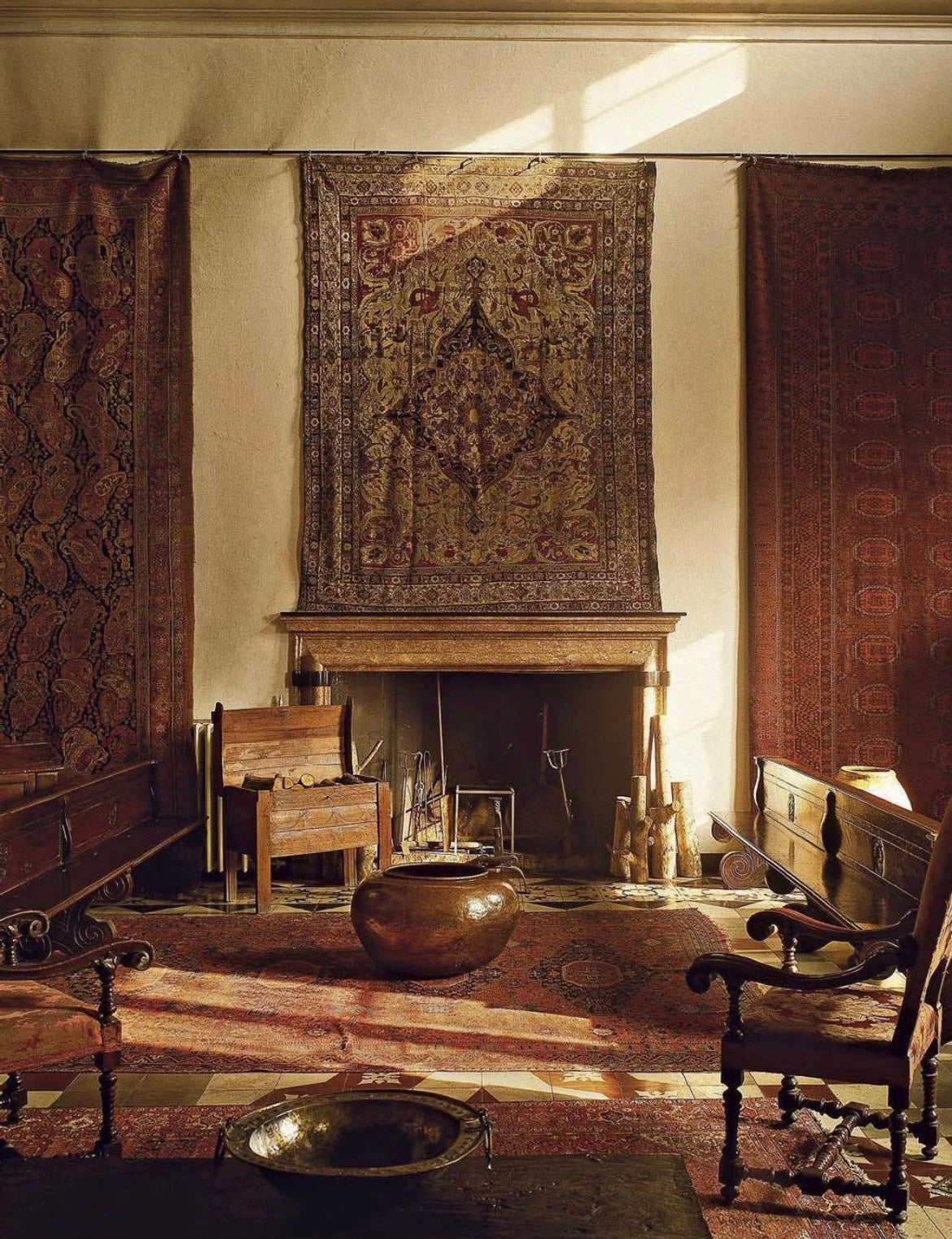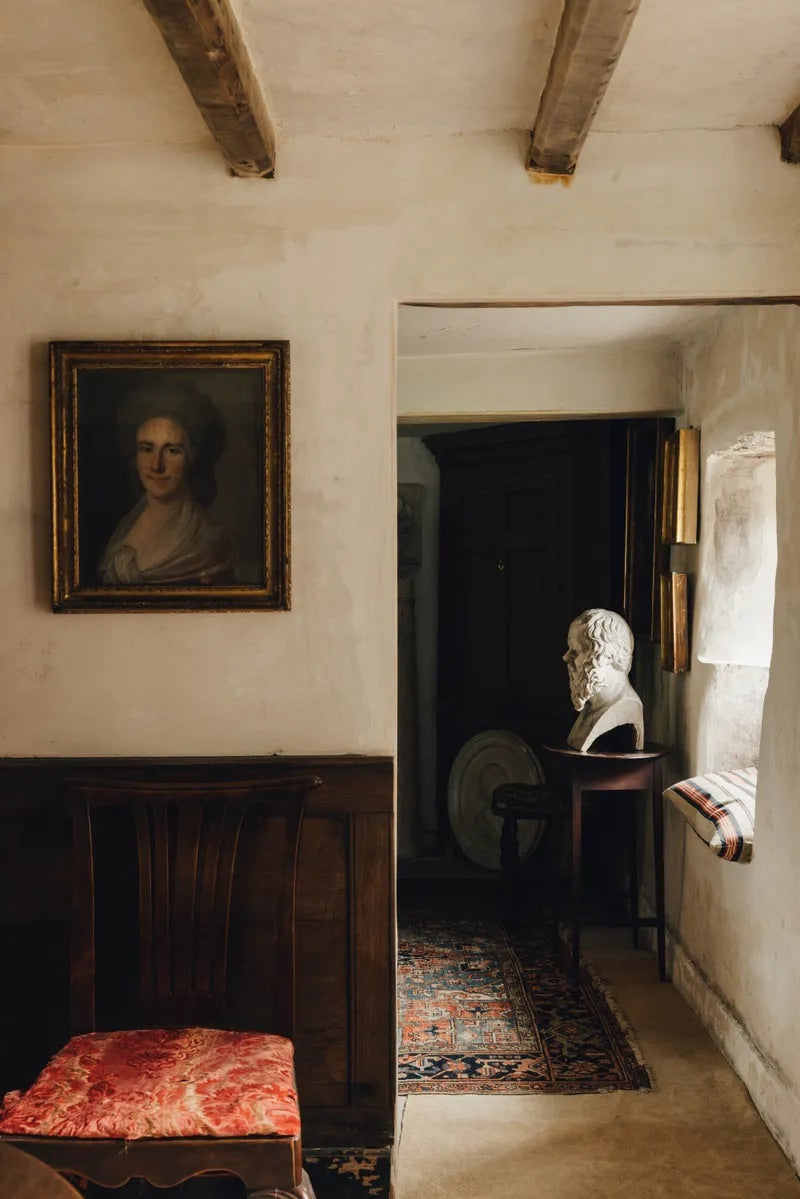Trick of the Eye

Inside Lake Lugano's Villa Cicogna-Mozzoni, 16th-century trompe-l'oeil frescos abound. Photo: The World of Interiors; A Decoration Book, Minn Hogg and Wendy Harrop, 1988
Like so many things, the French have a word for it. That strange phenomenon for when the eye sees something it knows is not there. The “trompe-l'oeil,” or trick of the eye, is an artistic technique that encompasses a range of sly graphic tricks. From wood painted to resemble marble, to incognito boxes designed as books, the trompe-l'oeil foremost aims to delude the eye, to present one thing as another. A compelling, if artificial strategy, one wonders how its charms so persist. Like the false art of a magician, the trompe-l'oeil delights us by its artistry and ingenuity alone. We are conscious our eye has been duped by a highly crafted process, yet the less conscious of it we are, the greater our measure of its success.
The term “trompe-l'oeil” was first coined by artist Louis-Léopold Boilly, who so titled his submission to the Paris Salon of 1800. His piece depicted pinned up scraps of paper as a sort of moodboard, though the only materials used were paint and canvas. The artistic strategy was not new, however, and in fact its origins might even be traced to the ancient Greek myth of Zeuxis.

Trompe-l'oeil panelling from Polton House. Photo: World of Interiors, Feb. 2004
The story goes that a royal competition was held among artists, to see who could paint the best picture. The famous Zeuxis produced his piece, a still-life of grapes so convincing that two birds descended upon to peck at them. The crowd was amazed, and declared him the unquestioned winner. Then rival artist Parrhasius stood up to show his piece. Zeuxis, with an air of self-satisfied bemusement said, “Come, pull back the curtains and show us what you've got.” Parrhasius stared, “Pull them back yourself.” Zeuxis tried and tried, and when he could not, realized the trick that had been played him. Humbled and thoroughly impressed, Zeuxis declared Parrhasius the winner, saying, “I could but fool beast. You my friend, could but fool man.”
I love nothing more than to find a unique piece of trompe-l'oeil in my travels. There's something so intriguing about the genre as an aesthetic category; the level of craft and imagination necessary to produce a successful piece always guarantees interesting results. Below, I've shared with you some of my personal favorites from our collection, examples I feel have a wonderful mix of understatement and panache.





